Matador Network's Blog, page 2306
March 3, 2014
Every border is a crime against humanity

Photo: Denise Krebs
Nationality is a strange thing. To think that one’s identity would be so thoroughly set by geography rather than self-determination may be a disquieting thought for some, but even the most rebellious would admit that love it or hate it, your country is a big part of who you are.
We’re not all the same, of course. There’s enough variety among the citizens of even the smallest of countries to keep things interesting. But there’s very little that cultural heritage doesn’t impact, with everything from accents to politics getting shaped by geography.
Which is why it’s so weird to think about how accidental it all is.
Do we really choose our identity?
None of us chose our country of origin. It was entirely out of our little baby-sized hands. And even those who eventually find an adoptive new home are likely to be influenced by circumstances of their home country, such as a shared language or legal issues.
And this is to say nothing of how realistic the opportunity to relocate was in the first place. Citizens of developed countries have the luxury of being capable of relocating, and perhaps even more importantly, often have the luxury of being able to enjoy visa-free travel to their prospective new home, so they can sample the lifestyle ahead of time. Even getting a long-term visa is generally easier for citizens of Western countries than others.
And what’s more, these moves are generally more for pleasure than necessity, which is generally how it works for those in poorer regions, who leave their home to seek a better life. Yet it’s harder for them to gain stability than it is for us to go on vacation.
Maps will map your life.
The most egregious examples of this problem occur when the divisions are practically right next to each other. The Berlin Wall, the Iron Curtain, and every DMZ on the planet put up barriers that carve apart communities, with what can appear to be permanent effects.
Even without the specter of warfare, these walls exist. EU citizens travel visa-free all over the world, but if you were born in the Balkans, you’ve been clamoring for equality for decades. And it’s never about the people. Only their place of birth.
“Thanks, emperor so-and-so.”
Even worse, those borders are often arbitrary. The map of the world has been subjected so thoroughly to the whims of kings, queens, khans, sultans, and emperors, whose conquest-fueled rises to power have determined the fate of billions by relegating them to one side of the border or another. If one particular king had marched north instead of south, that border might have been entirely different, as would the lives of those caught in the wake.
Which is why every border on the planet is a crime against humanity.
Borders are bullshit anyway.
It’s not something we often think about. France is France, Peru is Peru. We’ve seen the same maps practically our entirely lives, with occasional changes here and there (mostly divisive, by the way). But it’s not often we think about how these borders were formed. If we did, we’d immediately realize it’s all rather silly.
Take a look at how thoroughly things have changed in Europe, just in the last 500 years:
Ever wonder why those lines are drawn the way they are? Most often, nonsense and warfare:
Poland was literally moved to the west in the aftermath of World War II, with entire cities switched from one nationality to the other, along with massive swathes of land.
The Pope divided South America between Portugal and Spain, thus determining the economic and linguistic fate of the entire continent. In an interesting side note, Portugal is now considering switching “official” Portuguese to the Brazilian dialect.
The Mongols nearly conquered Europe. They got all the way to the gates of Vienna, only turning back home for a funeral.
Australians only speak English because the British got to it first. It may very well have been China instead.
Speaking of China, they sailed all over the world, looking for cultures and civilizations as advanced as their own. They found none. Just before they got to Europe, an emperor destroyed all the long-distance ships because he assumed there was no point seeing what was out there. Then Europe came in and practically took over the entire place.
Spain is a huge mess. It has five different languages and obviously shouldn’t be a single country, except that changing it now might be even messier. It even used to include Portugal. Oh, and the Arabs used to rule the southern section. Plus there’s Gibraltar.
Austria and Germany are somehow two different countries. This would be weird, except for the fact that Germany used to be hundreds of countries. People at the time joked about how they had one country for every day of the year.
Bangladesh used to be East Pakistan. Yeah, that was totally gonna work out.
Italy used to be a mess of city-states and regional powers. If it weren’t for unification efforts, it would probably still be half a dozen different countries.
Russia sold Alaska to the United States. Imagine how weird it would be if Russia still had it.
Um, Tibet. Plus Xinjiang, Manchuria, and Taiwan. China even wanted Mongolia too, but the USSR said no.
And, as we know, most of the world map was drawn by colonial European powers. Those exactly-straight lines all over Africa? Thanks, England. That divide-and-conquer approach sure was nice of you. I’m sure nothing will go awkwardly when divisions are made without thought to geography, climate, language, or animal migration patterns or whatever. It’ll be just fine!
Why this rant? Well, it was sparked by a plain and simple predicament of a UK citizen trying to live in New Zealand. They wouldn’t let her. Apparently to extend your work visa you need to prove you can do a job that no New Zealander can. In other words, “no.”
I could go on, of course. Years ago I read of an American resident being deported to Cambodia over minor crimes. He left Cambodia as a baby, spent his whole life in America, only spoke English, and was shipped off to the other side of the planet, because that’s what happens to non-citizens who commit minor crimes. Sounds like a cruel and unusual punishment to me, but hey…America can be mean.
And then there’s the analysis of the international economic advantages of undaunted, worldwide social mobility, which indicates that eliminating all world borders would double global GDP. Imagine that
But for me, it’s mostly the issue of morality. Relegating billions to a geographically determined legal fate is, to me, indistinguishable from racism, anti-Semitism, homophobia, or sexism. It’s discrimination, plain and simple.
All you need is love!
I wonder if we’ll ever reach the point that we view humanity as a singular organization, a home team with no rival, entirely unified in our efforts at global development, scientific discovery, poverty reduction, and sustainability. To me, we’re all human. Plain and simple. We’d have cured cancer by now if we all felt the same way. And colonized the moon. And skipped over that whole slavery thing. And so on.
I like to think I’m optimistic about it. The Schengen agreement brought unrestricted travel to millions. More and more countries are joining cooperative economic unions. Southeast Asia is considering a unified tourist visa for all countries. I expect this sort of thing to continue, even if progress is slow. But I expect it will gradually unfold in our lifetimes.
We can get there, guys. No “us and them.” Just us. And it’ll be awesome. [image error]
This post was originally published at Snarky Nomad and is reprinted here with permission.
The post Every border is a crime against humanity appeared first on Matador Network.

Why every woman should check out the Women’s Travel Fest
MARCH 8, 2014 is set to be the first ever Women’s Travel Fest, an entire conference dedicated to the topic of women and travel. I’m super excited to attend this year, and celebrate the freedom I feel while traveling on my own. I spoke with Kelly Lewis, friend and creator of Go! Girl Guides, who is also the founder of the Women’s Travel Fest; here’s what she has to say about why this event is going to change the way women travel:
MN: So why a travel festival dedicated to women’s travel?
KL: I strongly believe that the world is mostly safe, and that people are mostly good, but there are so many women that I meet who are scared, or intimidated to travel the world. We need to change that! The Women’s Travel Fest aims to inspire and empower women to travel the world, and help them make newfound travel connections.
Women have unique concerns about their health & safety while traveling. The Women’s Travel Fest is a natural extension of my original business, Go! Girl Guides, which publishes the world’s first series of travel guidebooks made just for women. Last year, as I was moving to NYC, I went on a cross-country book tour for GGG where I was speaking to hundreds of women about the amazing transformative power of solo travel. The energy & the love that came from these talks was electrifying, and when I made it to New York, I knew it was time to do this on a bigger level. After meeting Mickela Mallozzi & Masha Vapnitchnaia, the Women’s Travel Fest was born. I can’t wait!
MN: What are some of the topics that will be covered during the Fest?
KL: Our speakers offer first-hand tips on everything, from traveling solo through the Middle East, to making the transition from solo travel to family travel. We’re also addressing simple things, like packing tips, and helpful apps for women on the road, as well as touching upon societal taboos: sexuality abroad, for example, or breaking free of the mold of “housewife” and “mother.” We’re going to show that travel can be as simple as booking a plane ticket — and then we’ll help you with everything that comes after. 
MN: The speaker list looks awesome! How did you decide who to reach out to for this opportunity?
KL: The women who are speaking, from Travel Channel’s Samantha Brown, to author and activist Sarah Shourd (who spent 410 days in solitary confinement in prison in Iran after crossing an invisible border while hiking in Iraq), are inspiring, empowering, and everything we want the festival to embody.
When we began reaching out to speakers, we first made a list of topics we’d like to address, and then contacted experts in that field. We also thought about women who inspire us. I’m so humbled & honored to be sharing the stage with these incredible women!
MN: Are there any interactive elements? After parties? Cocktail, networking or lunch events?
KL: Lunch is included in the ticket price ($75), as is the cocktail hour. We have some incredible sponsors for the cocktail hour — Jameson will be doing a whisky tasting, Blue Point Brewery and Anheuser-Busch have donated beer and cider, Wine Awesomeness is donating some of their tasty wines, and the Curacao Tourist Board is setting up a Curacao and vodka specialty cocktail station.
The cocktail hour is a great way for women to interact and build newfound travel connections. We’re all about fostering new friendships and partnerships, and there will be plenty of opportunities for this throughout the day. When you get a group of 400 women who love travel together, magic just happens!
MN: Your number one travel tip for ladies is:
KL: Confidence is everything. Be cautious, not paranoid, be confident, and aware. Trust that people are mostly good and that angels are everywhere.
The aim of the Women’s Travel Fest is to help women to feel comfortable and confident enough to take on the world. We want to help them feel inspired, empowered and enthusiastic about travel. So I guess the message is: Watch out world, we’re comin’ atcha!
Tickets for the event can be purchased at WomensTravelFest.com, or by clicking here. Can’t make it to the Fest this year? Follow the event on Twitter and Facebook to see what people are saying about it online! 
The post Why every woman should check out the Women’s Travel Fest appeared first on Matador Network.

9 signs you’re not in Kansas anymore

Photo: Niccolò Ubalducci
1. Tornado sirens catch people off guard.
Or you cringe because you find out your new locale is in fact so unprepared that they’ve neglected to install the life-saving horn blasters at all.
You’re accustomed to a routine, and you’ve learned not to stray from it. Sirens sound, check date and time to determine if it’s a monthly test, take a peek at the sky, head to the well-stocked mini-fridge and entertainment system in your basement with a flashlight, and turn on the news. Just another stormy night in Kansas.
Outside of Tornado Alley, your routine goes to pieces. Instead, you get panicked meteorologists, a lack of posted public safety plans, and the realization that architects outside of Kansas have yet to consider basements a necessity. When you’re enduring a freak storm without warning, huddled in an empty bathtub, you’ll be wishing you were back home again.
2. Everyone you meet wants to take you to the ocean.
Your actual proximity to the ocean doesn’t matter. Each time your Kansas roots come up in conversation, your new acquaintance will ask if you’ve ever laid eyes on the ocean. Before you have the chance to respond, they’ll already have decided that you, in fact, have not.
But don’t fret! This person is your saving grace, your light in a dark place, the answer to your life’s greatest questions. Because at this very moment they’re already planning your “first” trip to the beach, complete with a picnic lunch and $.99 kites from Walmart.
If everybody you meet starts to dream about their future YouTube fame when they catch you, a full-grown adult, on camera staring wide-eyed at the Atlantic for the very first time, you’re definitely not in Kansas anymore.
3. Your alma mater apparel is no longer acceptable for formal occasions.
Even if your t-shirt is fitted, your hoodie is straight-out-of-the-dryer fresh, and your alumni polo is made of particularly high-quality cotton, it won’t work for date night. It also won’t work for interview day, fancy office dinner evening, or social networking brunch.
Getting dressed is hard when you’re not in Kansas anymore.
4. The speed limit seems low, the driving age seems high.
Any posted speed limit under 75 will seem like child’s play. When you find yourself cheering at the sight of a sign sporting a 60 and it feels like you may be breaking the sound barrier, you know you’re not in Kansas anymore.
But then again, we Kansans have been driving since the age of 14. Maybe those extra couple years behind the wheel justify our amped speed limits on our perfectly paved, wide open roads.
5. You can’t find the sky.
Sunrise, sunset, midday, or dead of night, a Kansas sky never fails to make a statement. When you find yourself searching for a sliver of blue through the thick of trees, between mammoth buildings, or beyond towering mountains, you are most definitely not in Kansas anymore.
6. The courtesy wave has lost its meaning.
So all of a sudden you wave to a stranger and it’s “creepy.” Waving for someone to cross the street outside of a crosswalk is dangerous, and pausing to wave another car into traffic on a busy road will only elicit a contagious line of angry honking.
If you happen to be the driver of the vehicle in desperate need of a friendly traffic wave, unless you’re in Kansas, I hope you packed snacks.
7. You need to borrow a truck and no one has one.
Not everyone in Kansas drives a great big pickup truck with 4WD and owns an endless supply of tarps, bungees, and rope. But the important thing is that their neighbor, brother, friend, uncle, sister-in-law, or coworker does, and they’re always happy to share.
Move out of Kansas, and though you’ll still see trucks on the road, their owners are mythical creatures who only appear to you in dreams around the time you’re ready to move a houseful of furniture.
8. You’re constantly defending your education.
It won’t matter that you followed the lead of Kansans Clyde Cessna or Amelia Earhart and now engineer or pilot airplanes. It won’t matter that you’re studying to become a brain surgeon in the very place neurologist William Koller was successfully tackling symptoms of Parkinson’s disease. It won’t matter that you’re one of the nation’s brightest teachers, most sought-after veterinarians, or most cunning lawyers.
When you find yourself in a discussion about your Kansas education, there’s no need to dazzle your new companion with your academic achievements or superior knowledge in your field. They’ll likely be impressed simply to find out you can sing your ABCs.
9. Everybody keeps pointing out that “you’re not in Kansas anymore.”
Perhaps the most telltale sign your feet have left their home on the range are the incessant verbal reminders that “you’re not in Kansas anymore.”
But I concede, if I actually owned a pair of ruby slippers that could forever rid me of long layovers and TSA frisks, I might be less hostile about that stupid Dorothy reference. [image error]
The post 9 signs you’re not in Kansas anymore appeared first on Matador Network.

Powder for Powder, episode 2
AS MY BROTHER YANCY AND I dug our camper out of 15 inches of fresh powder on Rogers Pass, BC, we asked ourselves why we were leaving this snowy paradise. But we’d committed to heading north through Banff National Park, up through the Yukon, and on to Alaska. Coming off a great winter season at home in Idaho, this was the second time we’d struggled with a departure. It’s hard to fathom leaving such fresh snow with only distant hopes that the stars might align for a successful Alaska trip. But with Arctic Man, Tailgate Alaska, and more heli time to film in Haines ahead of us, we refocused our eyes on the prize and reassured ourselves it would be worth the drive.
Just preparing to pull the trigger on a winter road trip up the Alaska-Canada Highway is a feat in itself. The 3,500-mile route winds through the enormous band of rugged earth that is British Columbia and the Yukon. Nasty road conditions can quickly turn the five-day push to Valdez, AK, into a few weeks. Roads will close, axles can snap, and whiteouts can make traveling with a large camper and sled trailer almost impossible. Enormous potholes, hidden frost heaves, and icy corners became our primary enemies as we slowly chugged along the ALCAN on our way to Valdez.
We prepped our truck-camper-trailer setup well and had no major hiccups despite the blizzard conditions for almost half the drive. At the whim of Mother Nature we camped out at Liard River Hot Springs, near Muncho Lake, BC, to wait out a storm and avoid the risk of slamming a buffalo while traveling at night. The hot water felt so good after several long, cold nights in the camper. Temps dropped to 30 below in Whitehorse, Yukon, and the air stung our faces as we slept.
After five days of driving, a new perspective is gained on how big North America actually is, and how vastly uninhabited the northern tundra and taiga are. This frozen wilderness makes up 27% of the world’s forests and is littered with stunted, Dr. Seuss-like conifers, five feet tall but 100+ years old, stretching all the way from Canada to Russia and Scandinavia. After another alpenglow sunset, and with the Northern Lights lighting up the sky, we finally caught sight of the ALASKAN border sign. A few high 5s later, and we were on the home stretch to Valdez. 
Words and photos by Wyatt Caldwell; video by Yancy Caldwell.

1
On our first morning of the ALCAN drive, we woke up to 15 inches on Rogers Pass, BC. Here's Yancy taking in the blizzard view down valley before riding powder all the way to the camper door.

2
Conditions changed to bulebird skies after the crushing storm, shedding light on Banff National Park as we headed north.

3
Buffalo line the ALCAN Highway as they graze on shrubs the sun has melted out. They didn't seem to care that they are 2,000lb obstacles in the middle of the road!
Intermission
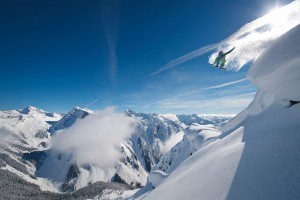
Powder for Powder, ep. 1: Monashee mission
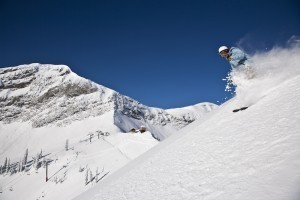
Powder Highway road trip part 1: Storm riding in Fernie
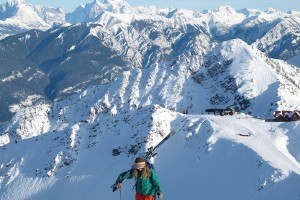
Powder Highway road trip part 2: Bluebird in Kicking Horse

4
Taking in the view across Destruction Bay before attempting this frost-heave nightmare stretch of road.

5
A classic restaurant in the middle of the Yukon reminding us to keep a lookout for the aurora borealis.

6
Sunset on the taiga always reminds me of Dr. Seuss's trees in The Lorax.

7
Moose are everywhere—enormous and not at all shy.

8
This incredibly rare sighting of a lynx chilling in the brush just across the Alaskan border drove home the point that wildlife is everywhere up here.

9
Traveling on the ALCAN will turn the ordinary into the extraordinary.

10
Finally we saw our first bald eagle—we must be getting close to the Alaskan coast of Valdez...
The post Powder for Powder, ep. 2: ALCAN adventure appeared first on Matador Network.

How to piss off someone from Ohio

Photo: Michael Shane
Bitch about our role in the Presidential elections.
I’ve had a lot of people tell me, “No one would give a shit about your state if it weren’t for the Presidential elections.” First off: Go fuck yourself. 11.5 million Ohioans care about our state. Second: Look, I totally understand thinking the Electoral College is bullshit, but the reason we have so much power is that we’re one of the most populous states in the union. So if the system’s unfair, it’s the system’s fault, not ours. There are a ton of us.
And maybe, if you wanted politicians to pay more attention to you, you could try being a purple state for a bit. Seriously, try it, the power is intoxicating.
Tell us our chili isn’t chili.
Yes it is, and it’s the best chili. Look, I love my family, but when I go back to Cincinnati, I’m going for Skyline Chili first and family second. So naturally, it’s infuriating when visitors to Ohio say, “This isn’t chili, chili needs to have vegetables in it,” or, “Chili doesn’t go on top of spaghetti.” Order a four-way beans if you want some vegetables, and try eating a five-way and telling me there’s anything wrong with the world.
I’ve got nothing against Texas chili, but when those Eastern European immigrants came to Cincinnati decades back and showed us their take on this quintessentially American dish, they did one of two things: They either created the most delicious abomination of all time, or they created the only known proof that God exists and that he loves food.
Tell us Ohio’s just a bunch of farms.
Anyone who’s judging a state by what they’ve seen from the state’s highways is an asshole. But Ohio is way more than farms. We’ve got a number of amazing cities with strong economies and vibrant nightlife, culture, and music scenes, as well as some of the best colleges and universities in the country.
Also, we’ve actually got the 10th-densest population in the country, so if you see Ohio and see an empty expanse, you’re either blind or are living in a post-apocalyptic wasteland.
Downplay our cultural impact.
Another jibe I often hear living on the East Coast is, “What’s Ohio ever given us?” Glad you asked!
Not only has Ohio provided 7 of our 44 Presidents and 25 astronauts, but we’ve also produced one of the best baseball teams of all time (the Big Red Machine), one of the consistently best college football teams (Ohio State), musical acts like Dean Martin, the Righteous Brothers, the Black Keys, and the National, and actors like Clark Gable, Martin Sheen, and Paul Newman. Oh, and Jerry Siegel and Joe Shuster, the creators of the most American icon of all time: Superman. Not to mention the Professional Football Hall of Fame, Rock and Roll Hall of Fame, and the National Underground Railroad Freedom Center.
I could list off more (always, always glossing over 98 Degrees), but the point stands: Ohio is a culturally significant state. You’re welcome, world.
Have no clue where we are on a map.
For Christ’s sake, there are only 50 US states — how hard is it to remember where they all are? Go to Sporcle and play until you can name all the states on the map. Regardless, it’s galling when people from the East Coast don’t know where we are: Seriously, New York? We’re literally one state away. Just drive through Pennsylvania and you’re there.
On the West Coast, I’ve been asked if we’re “that potato state.” No, you asshole, that’s Idaho, and it’s super close to you. Ohio. We’re sandwiched between Lake Erie and the Ohio River, and we look like a big old lovable heart.
Tell us North Carolina is the birthplace of flight.
No. No no no. This is an ongoing dispute between North Carolina and Ohio, and North Carolina is fucking wrong. NC’s license plates say “First in Flight” because Kitty Hawk, North Carolina, is where the Wright Brothers flew their first airplanes. Ohio’s license plates say “Birthplace of Aviation” because the Wright Brothers — Dayton natives — designed and built their planes in Ohio. Kitty Hawk was legitimately chosen because it was breezy and had sand that would make a crash less destructive.
So if you’re going to give North Carolina credit for anything, give them credit for being a soft, pillowy surface to fail on. Give credit to Ohio for starting the Age of Aviation, which, in turn, kicked off the Golden Age of Travel.
Assume we all talk in a Southern drawl.
I have nothing against Southerners, but Ohio is definitively in the North. We’re literally where slaves escaped to prior to the Fugitive Slave Act of 1850. And while there are some Southern-ish sounding accents in our southern and Appalachian regions, we don’t all talk like Foghorn Leghorn or those hillbillies from Deliverance. Most of us are more or less indistinguishable from your standard American accent.
When broadcasters like Walter Cronkite, Linda Ellerbee, and Stephen Colbert wanted to sound normal, you know who they tried to sound like? Us. [image error]
The post How to piss off someone from Ohio appeared first on Matador Network.

51 amazing natural wonders [pics]
The world’s an incredible place, but sometimes I’ll find myself somewhere and actually have to take a second and ask, “Really? This is exists?”
This has happened to me at least four times in my life: in Chapada Diamantina (#45), when I climbed through a cave and then bungee jumped out of the mouth; watching the Northern Lights from a frigid jetty near Keflavik, Iceland (#17); seeing the sun set over the Grand Canyon (#19); and at the Grand Prismatic Spring in Yellowstone (#2).
The rest of these I’m only sort of convinced of they exist. So I’ll be thinking of the following pictures as a scientific checklist: I’ll just have to visit every single one to prove to myself they’re real. Feel free to do the same yourself. [image error]

1
Crystal Cave, Iceland
The Crystal Cave of Skaftafell is formed where the Vatnajökull Ice Cap meets the Icelandic coast.
(via)
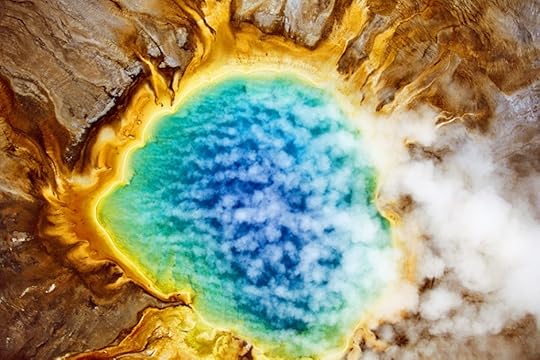
2
Grand Prismatic Spring, Yellowstone, Wyoming
It's the largest hot spring in the United States. The colors of Yellowstone’s Grand Prismatic Spring are caused by bacteria and microbes growing around the water’s edge.
(via)
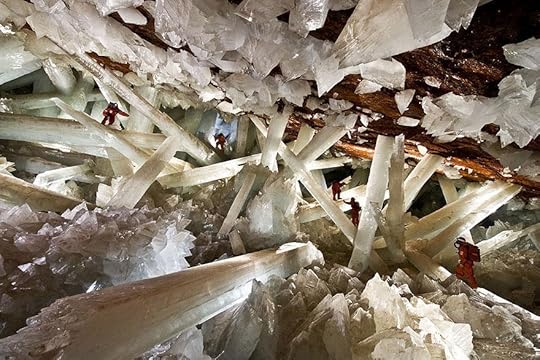
3
Naica Mine, Mexico
These gypsum crystals in the Naica Mine were formed over 500,000 years in underground hot springs. Unfortunately, the caves are closed to the public (as they are super toxic and dangerous).
(via)
Intermission

Amazing libraries around the world [PICS]
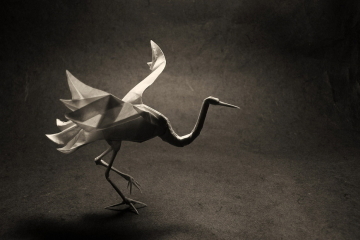
20 amazingly creative works of paper art
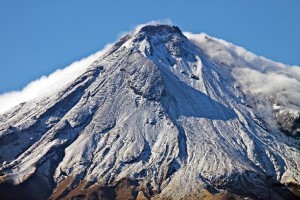
23 looks at New Zealand’s stunning geographic diversity

4
Uluru, Australia
Also known as Ayer’s Rock, Uluru is a sandstone rock formation that’s one of Australia’s most recognizable landmarks.
(via)

5
Lava flows, Big Island, Hawaii
All of Hawaii was formed by volcanoes, but there are still three active volcanoes on the Big Island, which means the landmass is still growing.
(via)
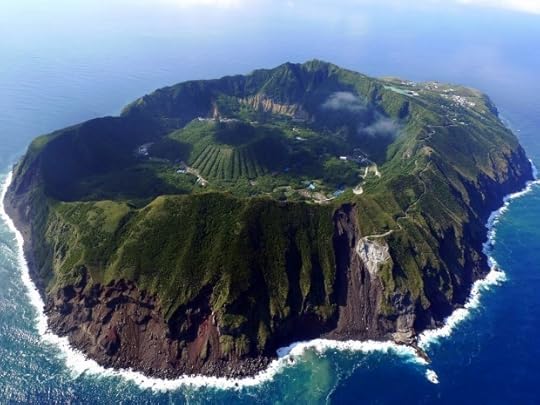
6
Aogashima Volcano, Japan
Aogashima is a volcano about 220 miles south of Tokyo. Though it hasn’t erupted in over 200 years, it is still considered active.
(via)

7
Salar de Uyuni, Bolivia
Salar de Uyuni is the world’s largest salt flat, and is also one of Bolivia’s most visited tourist sites.
(via)
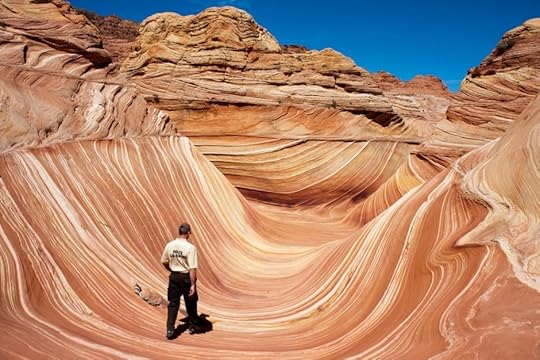
8
The Wave, Arizona
The Wave is a sandstone structure on the border of Arizona and Utah. Access is limited by a permitting system.
(via)

9
Mount Roraima, South America
The stunning Mount Roraima lies at the border of three countries: Brazil, Guyana, and Venezuela.
(via)
Intermission

18 amazing glass floor experiences [pics]

15 weird natural phenomena [PICS]
[image error]
16 reasons dredging at the Great Barrier Reef can’t happen

10
Caño Cristales, Colombia
Caño Cristales is known as one of the most colorful rivers in the world. The colors are caused by a small plants in the river.
(via)
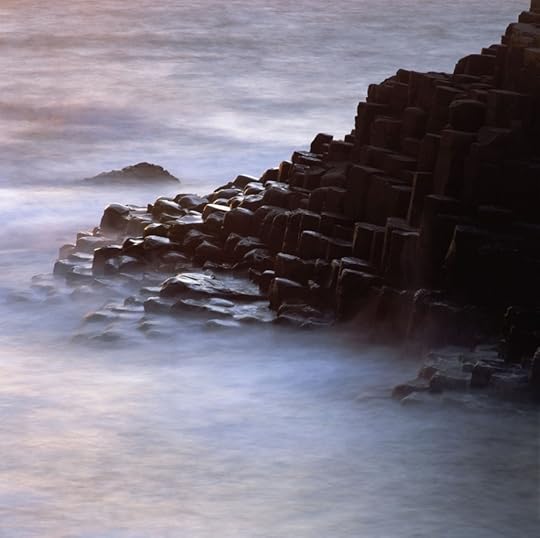
11
Giant's Causeway, Northern Ireland
These basalt columns on the coast of Northern Ireland were formed by lava during the Paleocene Epoch.
(via)
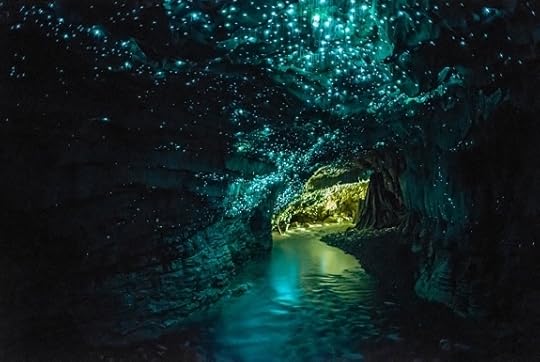
12
Glow Worm Cave, New Zealand
Glow worms (actually insects) are bioluminescent animals common to New Zealand and Australia. A number of caves are noted for their presence.
(via)

13
Ha Long Bay, Vietnam
The ethereal Ha Long Bay in Northern Vietnam has over 1,600 monolithic limestone islands.
(via)

14
Iguazu Falls, Brazil and Argentina
Iguazu Falls, sitting on the border of Argentina and Brazil, has been named one of the New Seven Wonders of Nature.
(via)
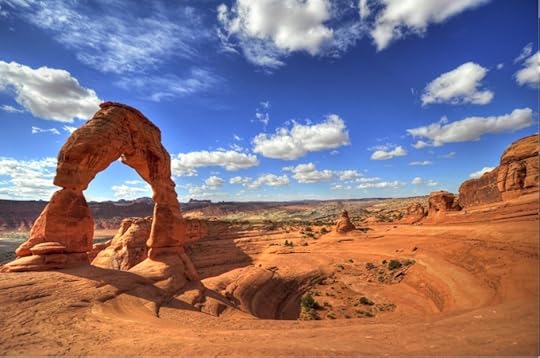
15
Arches National Park, Utah
This is the famous “Delicate Arch” in Arches National Park. There are dozens more arches and other unique geological formations in the park.
(via)
Intermission
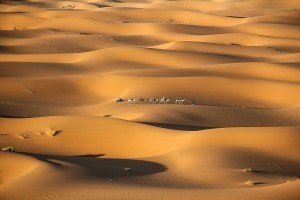
30 images of Morocco we can’t stop looking at
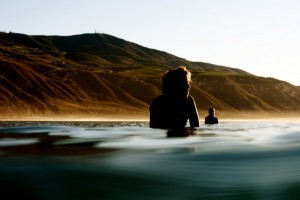
20 reasons to get wet this summer [pics]

50 stunning ice formations from around the world [pics]
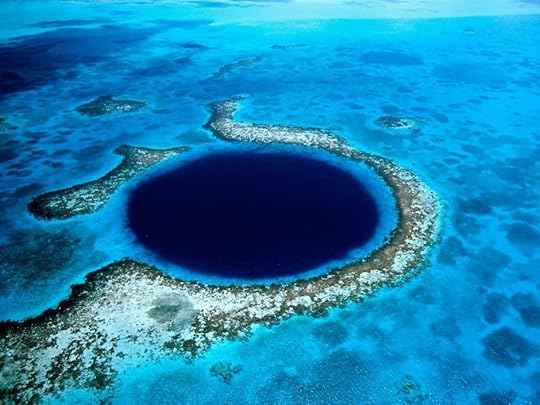
16
Great Blue Hole, Belize
Belize’s famous Great Blue Hole is actually a sinkhole. It’s considered an excellent diving spot.
(via)

17
Aurora borealis
Aurora borealis, or the Northern Lights, are the result of the collision of charged particles with our atmosphere. They are most visible at high northern latitudes.
(via)

18
Ice canyon, Greenland
Scientists have recently discovered a “new grand canyon” underneath Greenland’s ice.
(via)
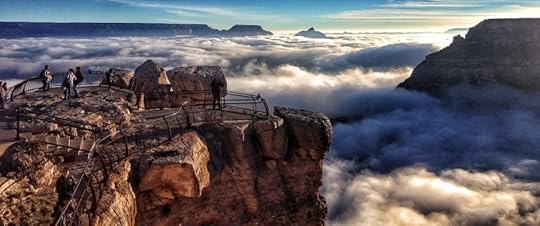
19
Grand Canyon, Arizona
The incredible Grand Canyon has been formed over the course of 2 billion years by erosion caused by the Colorado River.
(via)
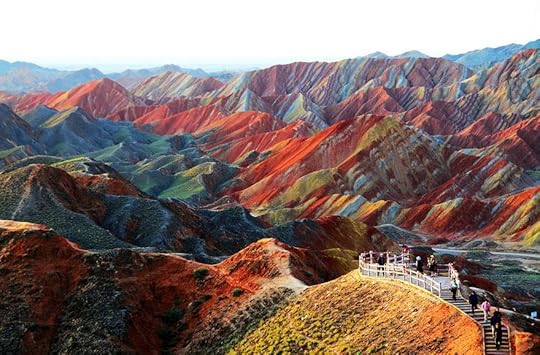
20
Zhangye Danxia Landform, China
Danxia landforms are relatively common in southern China, and are the result of eroding sandstone.
(via)
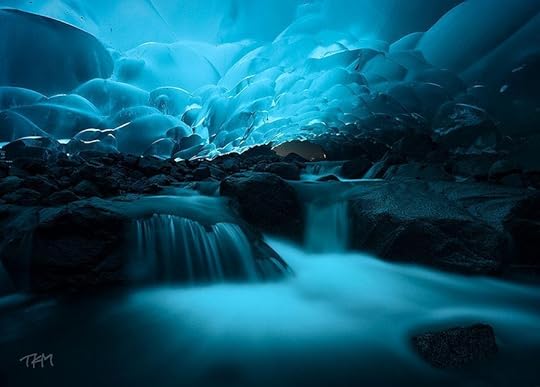
21
Mendenhall Ice Caves, Alaska
These ice caves lie underneath the Mendenhall Glacier near Juneau, Alaska.
(via)

22
Pamukkale, Turkey
Pamukkale is a Turkish hot springs with natural terraces formed by minerals deposited by the water.
(via)

23
Shifen Waterfall, Taiwan
The Shifen Waterfall on Taiwan’s Keelung River is the largest waterfall in Taiwan.
(via)
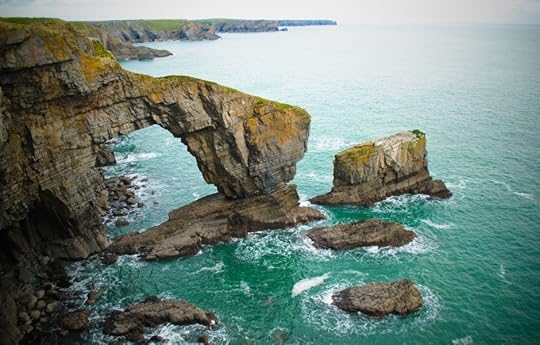
24
The Green Bridge of Wales
The Green Bridge is a natural arch that lies on the Pembrokeshire coast in the southwest of Wales.
(via)

25
Antelope Canyon, Arizona
Arizona’s Antelope Canyon is formed by the erosion of sandstone caused by flash floods. It’s the most visited slot canyon in the Southwest.
(via)
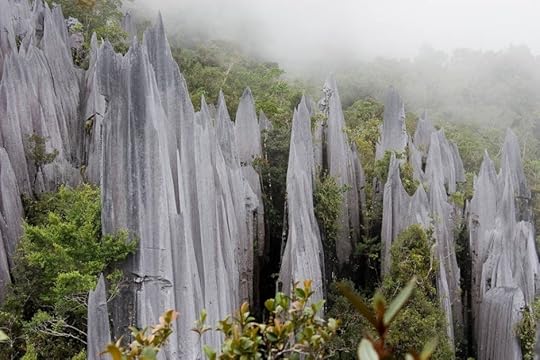
26
Rock Pinnacles, Gunung Mulu National Park, Malaysia
In Gunung Mulu National Park, Malaysian Borneo, these rock pinnacles are surrounded by rainforest.
(via)
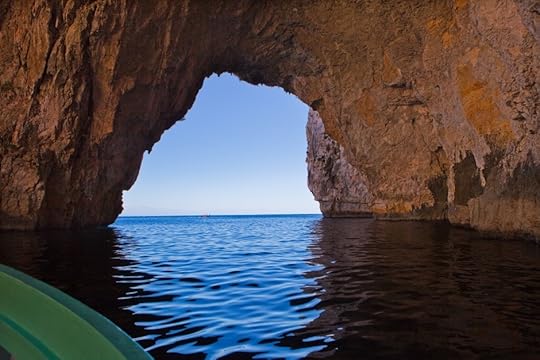
27
Blue Grotto, Malta
Malta’s Blue Grotto, a series of sea caves, is a favorite among tourists, snorkelers, and cliff-jumpers.
(via)

28
Torres del Paine, Chile
Torres del Paine National Park, in Chilean Patagonia, is best known for these three towers, also referred to as Cleopatra’s Needles.
(via)

29
Moeraki Boulders, New Zealand
These spherical boulders, found on the South Island’s Otago coast, are basically cemented mud and silt, exposed by erosion.
(via)
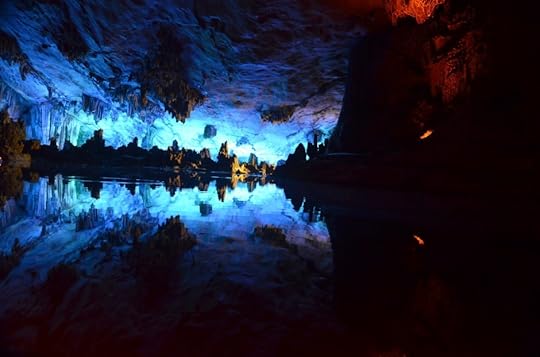
30
Reed Flute Cave, China
China’s Reed Flute cave is a famous tourist attraction in Guilin. The strange coloring comes from man-made lights.
(via)
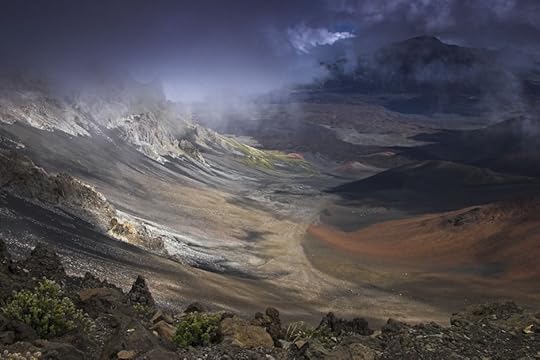
31
Haleakala Crater, Hawaii
Haleakala is the dormant volcano on the east side of Maui.
(via)
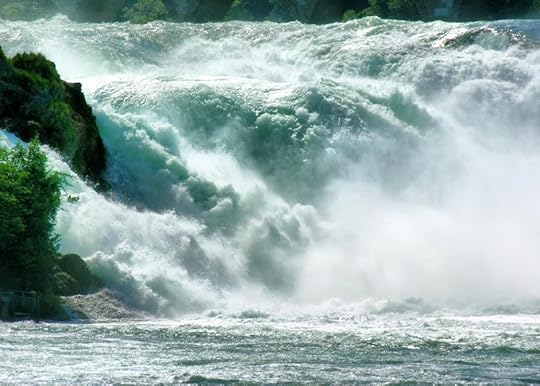
32
Rhine Falls, Switzerland
The Rhine Falls, near Schaffhausen in Switzerland, is the largest plain waterfall in Europe.
(via)

33
Horsetail Fall, Yosemite National Park, California
Horsetail Fall is a seasonal waterfall that occurs on the east side of the rock formation known as El Capitan. You can see it in the winter and in the early spring. If conditions are just right in February, the water catches the light of the setting sun and turns a fiery orange.
(via)
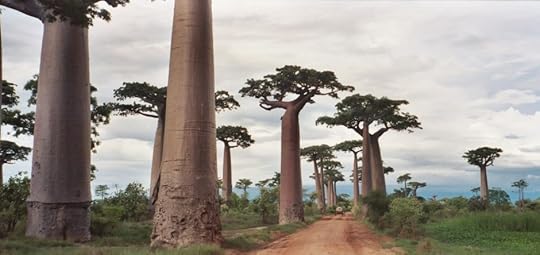
34
Avenue of the Baobabs, Madagascar
This grove of Baobab trees lies slightly outside the city of Morondava in Madagascar.
(via)

35
The Tunnel of Light, Arizona
The Tunnel of Light is part of Antelope Canyon, pictured earlier.
(via)

36
Devil's Tower, Wyoming
Devil’s Tower in northeastern Wyoming lies in the Black Hills. It is probably most famous for the part it played in Close Encounters of the Third Kind.
(via)
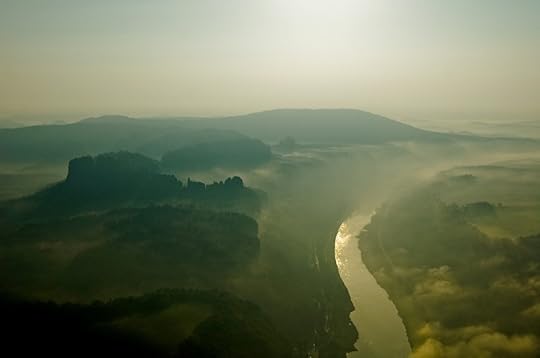
37
The Elbe River, Czech Republic
The Elbe, running through the Czech Republic and Germany, was claimed by the Soviet Union to be the place that Hitler’s ashes were spread.
(via)
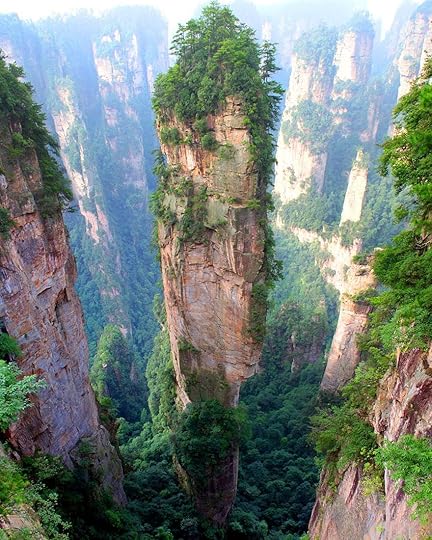
38
Tianzi Mountains, China
These towers in the Hunan Province of China are formed of quartzite sandstone pillars.
(via)
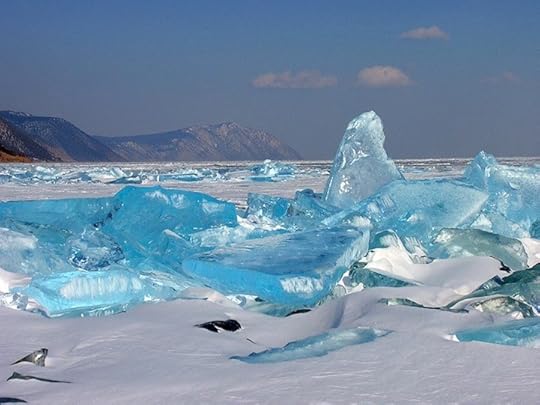
39
Lake Baikal, Russia
Lake Baikal is a rift lake in Siberia that is the deepest, most voluminous freshwater lake in the world. It contains about 20% of the world’s unfrozen fresh water.
(via)

40
Half Dome, Yosemite National Park, California
Half Dome is one of the most famous landmarks in Yosemite National Park.
(via)
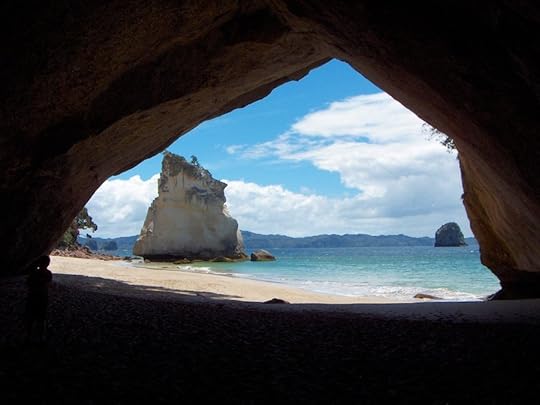
41
Cathedral Cove, New Zealand
Cathedral Cove is part of Te-Whanganui-A-Hei Marine Reserve on the Coromandel Peninsula of New Zealand. The rock you see here is known as Te Hoho Rock.
(via)

42
Sahara Desert
The Sahara Desert is the world’s hottest and third-largest desert, and it makes up a huge portion of North Africa’s area.
(via)
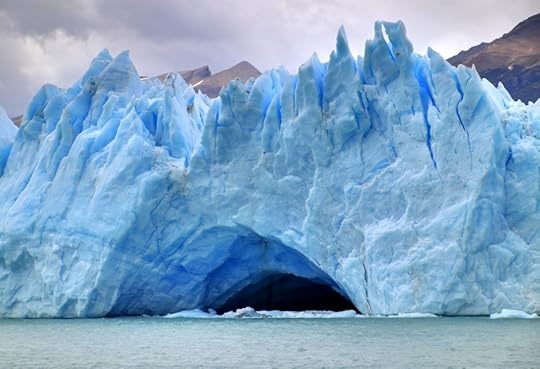
43
Perito Moreno Glacier, Argentina
Perito Moreno Glacier, in Patagonia, is a famous attraction. Many tourists go trekking on the ice, or visit to watch the calving of the glacier.
(via)
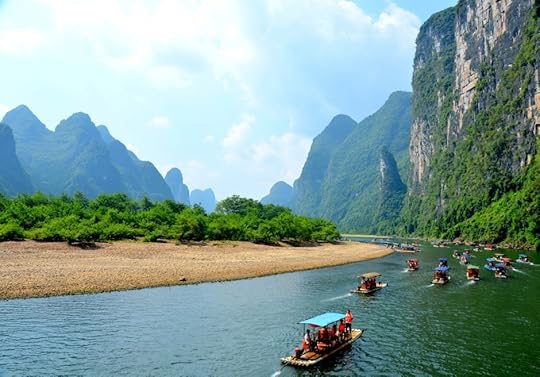
44
The Li River, China
The Li River runs from Guilin to Yangshuo and is famous for its stunning karst views.
(via)
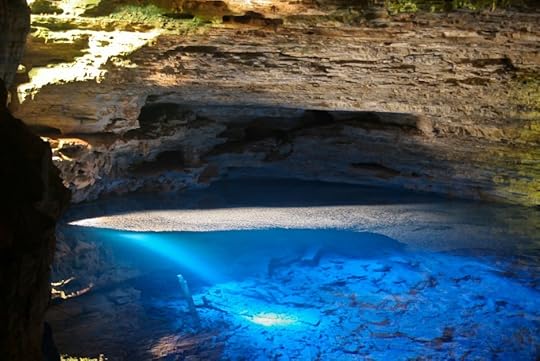
45
Enchanted Well, Chapada Diamantina, Brazil
Chapada Diamantina is a national park that sits on a plateau in Bahia, Brazil.
(via)
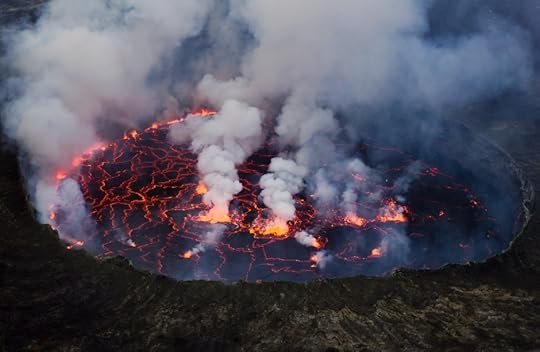
46
Nyiragongo Lava Lake, Democratic Republic of Congo
The Nyiragongo volcano is in the Virunga Mountains of the Democratic Republic of Congo. The crater that contained this lava lake fractured in 1977, destroying the lake and killing 70 people.
(via)
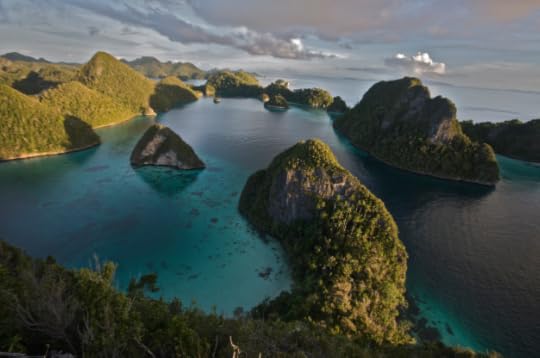
47
Raja Ampat Islands, Indonesia
Raja Ampat is a New Guinean Archipelago of over 1,500 islands.
(via)
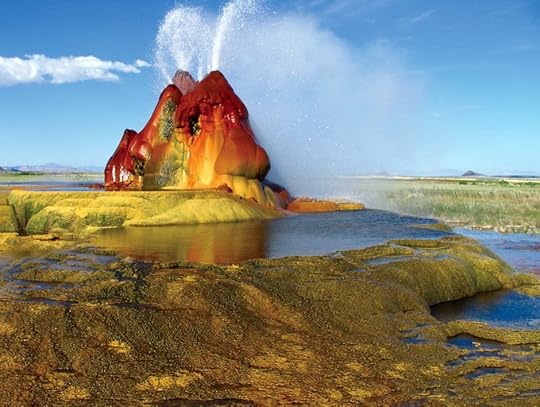
48
Fly Geyser, Nevada
The Fly Geyser was actually manmade: When settlers drilled a well, they didn't cap it correctly, and this geyser has been formed over time.
(via)
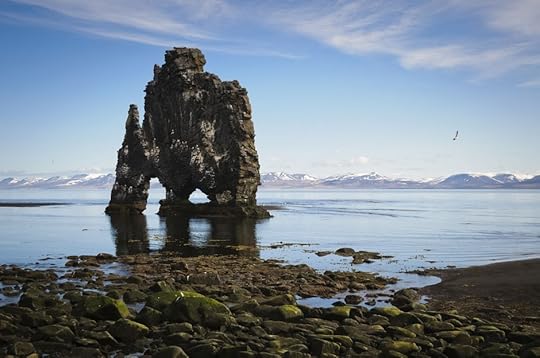
49
Hvitserkur, Iceland
Hvitserkur is the name for this 15-meter basalt sea stack just off the coast of the Vatnsnes Peninsula in Iceland.
(via)

50
Bryce Canyon, Utah
Bryce Canyon is actually not a canyon, but a collection of amphitheaters. The geologic structures seen here are known as hoodoos.
(via)
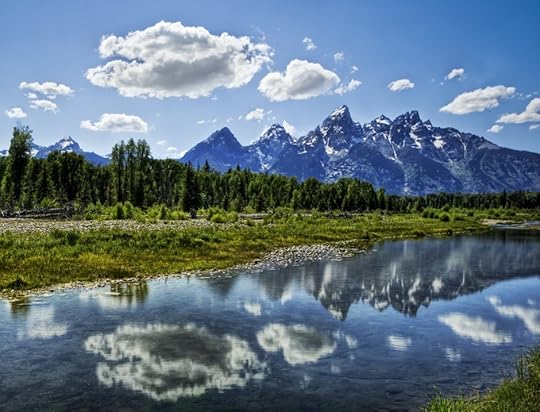
51
Grand Tetons, Wyoming
The Grand Tetons (French for “The Big Breasts,” because, why not?) are the three largest peaks in the Tetons range, just south of Yellowstone.
(via)
The post 51 natural wonders so amazing it’s hard to believe they exist appeared first on Matador Network.

March 2, 2014
Music video raises awareness?
I AM ACTUALLY curious to hear how other people react to this music video, created by Jah Marley, promoting the #WaveOfAction campaign. I found the imagery, and the fast-paced rapping, to be overwhelming. I also wasn’t sure what the actual point of the video was supposed to be — government bad, rap music good? Are those strobe light effects really necessary? Who even still listens to the band, Korn?
While I don’t think the world is perfect, nor do I see America’s problems being solved anytime soon, I’m not sure this is the best advertisement to raise political awareness for…whatever the artists are trying to say here. I am all for people being the change they wish to see, and being more politically active than just voting, which is what the #WaveOfAction project seems to be about; this video doesn’t really convince me of their cause however, nor does it tell me anything I didn’t already know.
What do you think about it? Voice your opinions in the comments section below. 
The post Is this music video an effective way to raise political awareness? appeared first on Matador Network.

The war on the working class [vid]
HOW CAN anyone defend what is so obviously wrong? And it’s happening right in front of our noses. How much longer will people put up with it?
Robert B. Reich is a political economist, university professor, author, and political commentator. 
The post Professor destroys corporate American attitudes in 2 mins appeared first on Matador Network.

Greatest Oscars dis of all time
When the rain doesn’t change anything

Photo: jeronimo sanz
Peter and I did a lot of things in the rain. We met in the rain at a bus stop after arriving by ferry from mainland Malaysia to the island of Penang. We hiked a mountain in the rain and were chased by monkeys on our descent. We ate many dinners together in intermittent silence as the rain drummed on the thin roof covering us. We had sex in the rain.
The water drummed hard against the bamboo roof, and with the waves crashing hard against the beach a few feet away, I could barely hear the sound of him breathing heavily into my neck. It wasn’t because it’d been months since I’d felt the passionate need of a man on my skin that I lost myself and molded so effortlessly to his body, or even because of the way his thick hands wandered with such care from my lips, down my neck, across my breasts, and pulled me intensely to his chest. It was because he remembered the things I’d forgotten I’d told him two weeks earlier — things an intellect such as his shouldn’t have made note of in the first place — and the way he endearingly corrected my facetious remarks with factual statements — sincerely and without patronizing — that I felt, being four months and three time zones away from home, I could indulge in the best of what could come from being in the right place at the right time.
He had finally kissed me on our fourth day together at the beach in Penang, not because he hadn’t made it obvious sooner that he wanted to, but because the whole situation felt too Hollywood for me to let it happen. I had already wanted to undress him the day before, having spent hours watching his rugby legs flex and seeing the deep lines of his muscles through his shirt, damp with rain and sweat, as we ascended and descended 4,000 feet of Malay mountain, him in front of me. It was far easier for me to resist in the way I always do than to give in in the ways I wish I could, which is why I declined his offer on the fifth day to spend a few days with him at a little fishing village off the western coast of the island and instead ventured 13 hours north across the border into Thailand, without reason. With my secret doubts, I told him we could meet up again there.
Peter seemed to always know where he would be. He had everything mapped and planned.
His patience and my uncertainty only grew from the time he stopped in and hugged me goodbye at my hostel Friday at noon in Penang, to the time he again found me Wednesday night at 8pm sitting at the open-air front of my hostel in Koh Lanta. But when I climbed on the back of his rented motorbike later that night, straddling him closely and resting my hands with deliberation on his lower abdomen, I knew there was a reason I took the same route to where I knew he would be.
Peter seemed to always know where he would be. He had everything mapped and planned based on recommendations from guidebooks, blogs, and travel sites. He knew dates, facts, and figures and could discuss philosophy, literature, and politics with equal amounts of interest. He always carried a map and could always tell me with unwavering certainty what we should see. Our first night together in Penang, after eating at an Indian restaurant he’d read received a good rating, we ventured through the streets of Georgetown in the light evening mist. “We built this church in 18…,” he’d tell me, as we passed the British architecture he’d studied in university. On our second day together, we sat out on the pier and he told me his plans to be back in Melbourne for Christmas, and later when the conversation drifted lightly to talk of the future, he knew he wanted to be retired from a commendable military career at 40 and living back in his hometown hills in the UK. So much conviction for someone only 23.
I never knew where I would be. In fact, the idea of committing to a plan two days from now made me antsy with the fear I might miss something wonderfully spontaneous. I showed up at bus stations on a whim and arrived in new towns without the faintest idea of where I’d stay that night. I’d moved ten times in the last four years, between Canada, the United States, Ecuador, back to Canada, China, and now indefinitely through Southeast Asia, not to mention different cities in each place.
My geographical knowledge was commendable mainly because my passport stamps were well into the double digits and I regularly fantasized about the places I’d show up in next, staring at the little map of the world I had stored on my iPod.
“It always works out,” I told Peter, and he said he found my ad hoc approach endearing. I didn’t know any other approach. I had often tried to create a semblance of a plan, a route, a career path, a life plan, but my attention span usually broke and shifted, and instead I’d find myself thinking about how the lady I’d been watching across the street met her husband or what it would be like if I took a six-month contract in Afghanistan or the feeling I’d have when I finally overcame procrastination and wrote a book.
Silly was how Peter described the little tattoo on my ribs, but when I didn’t know the full history of Zimbabwe, I wondered if that’s what he thought of me too. But he kept inviting me to join him places. He ran his hands up my legs with the grip of someone who doesn’t fully know their own strength as we rode around the island on his rented motorbike, weaving the narrow roads between the beach and jungle. He asked me to dinner every night, and even when we sat for lengths of time in silence on the little wooden planks on the beach, watching the waves roll in and out, I somehow got the sense he enjoyed my company.
On our twelfth night together, I climbed up the wooden ladder behind Peter to his little stilted bamboo hut. The Lonely Planet listed the place as their number one choice for accommodations on that beach, not only because it was 500 baht a night, but also because the natural Thai feel was evident beyond the bamboo structures; no internet, candle lighting, guitar music. We stepped over the hammock strung across the tiny porch, dusted the sand off our feet, and crawled inside under the mosquito net that draped across the mattress that stretched across the full width of the hut.
I walked the narrow path between the palm trees with the unmistakable feeling that I was making a mistake.
It was already dark. It began to rain lightly and the smell of fried onions being cooked in the kitchen a few metres away wafted in through the open shudders. I sat with anticipation, knowing full well, as any 22-year-old does, what can happen after dark, while Peter climbed down the ladder on the other side of the bed and closed the door behind him to the bathroom without saying a word. When he returned a few minutes later, he lay down on top of me and we lay clothed, tangled in each other — arms and legs, hands in hair — in perfect silence.
“Are you sure?” he asked me. I didn’t answer him; instead I peeled off his thin green shirt to reveal a body toned from recent years of rugby training. I was sure but I still left in the middle of the night to return to my own guesthouse. Alone.
Many times I wonder whether I welcome solitude. I have ideals and perceptions created by an overactive imagination that no human can live up to, and so I find loneliness more appealing than bad company. Peter was exceptional company; he was witty and curious, and I was endeared by the way normal words sounded pretentious in his British accent.
But I still left, though not before returning to his bungalow the next afternoon to eat mango sticky rice on his porch and spend the night in his bed. I woke up sometime around when the sun did. The sound of Peter’s rhythmic breathing beside me and seeing him deep in sleep in only his Calvin Klein’s made me waver, but if I’m anything, I’m stubborn (and persistent). I found my dress at the end of the bed, slipped it over my head, and kissed him on the face. He sat up and hugged me for a long time in silence.
“Bye Peter. I hope to see you again,” I whispered, like it was him and not I choosing to leave.
“You will. Bye Adrianna,” he said, but I was already halfway down the bamboo ladder. I walked the narrow path between the palm trees out to where my scooter was parked with the unmistakable feeling that I was making a mistake. I wanted to crawl back under the mosquito net with him, feel his arm on my back when I stirred in the middle of the night, taste the saltiness of his skin. But I didn’t. I returned the scooter at 9am, had my bags packed by 10, and left for Bangkok at 11. [image error]
The post When the rain doesn’t change anything appeared first on Matador Network.

Matador Network's Blog
- Matador Network's profile
- 6 followers






